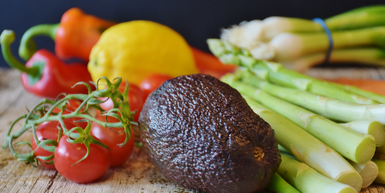5th Jun 2025
Understanding Low Glycemic Index Foods: A Bariatric Guide
If you’ve had bariatric surgery, you know that life after surgery is about more than just eating less—it's about eating smarter. One key concept that can help support your long-term success is understanding the glycemic index (GI) and how it impacts your weight, energy, and overall health.
Let’s explore what it is, why it matters for bariatric patients, and how you can make better food choices every day.
What Is the Glycemic Index?
The glycemic index ranks foods on how quickly they raise blood glucose (sugar) levels. Foods are rated from 0 to 100—low GI foods release glucose slowly and steadily, while high GI foods cause a quick spike in blood sugar.
This is especially important after bariatric surgery. Since your body absorbs nutrients differently and you're eating smaller amounts, choosing foods that keep blood sugar stable is crucial for:
-
Avoiding dumping syndrome
-
Preventing energy crashes
-
Supporting weight loss and maintenance
-
Managing cravings
-
Protecting long-term metabolic health
How Can You Estimate Glycemic Impact?
A quick way to assess a food’s glycemic potential is to calculate its net carbs:
Net Carbohydrates = Total Carbohydrates – Fiber
Foods high in fiber and low in sugar are typically low GI—great news for bariatric patients who need to focus on quality over quantity. These foods help keep insulin levels in check and reduce the risk of rapid blood sugar spikes that can cause fatigue, dizziness, or cravings.
Why It Matters After Surgery
After bariatric surgery, your body is more sensitive to foods that rapidly raise blood sugar. Here's why low-GI foods are beneficial:
-
They keep insulin levels low. Insulin is a hormone that helps lower blood sugar but also signals the body to store fat. Keeping insulin stable helps the body access fat for energy—essential for continued weight loss.
-
They reduce the risk of reactive hypoglycemia. This can happen when a blood sugar spike is followed by a sharp drop—common in post-op patients who eat high-sugar foods.
-
They support long-term metabolic health. Stable insulin and blood sugar levels reduce the risk of developing insulin resistance, type 2 diabetes, and other chronic conditions.
Examples of High vs. Low Glycemic Index Foods
High GI Foods to Limit (or Avoid Post-Surgery):
-
Fruit juices, canned fruit, and sweetened yogurts
-
White bread, bagels, pretzels, crackers
-
Cereals, pasta, white rice
-
Potatoes, French fries, winter squash (butternut, pumpkin)
-
Candy, baked goods, syrups, honey, agave
-
Sports drinks and sodas
Low GI Bariatric-Friendly Options:
-
Non-starchy vegetables: leafy greens, cauliflower, broccoli, zucchini
-
Protein: chicken, turkey, eggs, fish, lean beef, low-fat cheese
-
Fats: avocado, olive oil, nuts (in moderation)
-
Fruits: berries (low sugar, high fiber), green apples, small portions of citrus
What Else Can Raise Insulin?
Even if you’re eating well, stress and sleep can still affect insulin levels:
-
Emotional stress, illness, and inflammation increase cortisol, a hormone that raises insulin.
-
Poor sleep (under 7 hours or poor-quality sleep) also disrupts blood sugar control.
For bariatric patients, stress and sleep hygiene are often overlooked parts of the weight loss journey—but they’re just as important as food choices.
Tips:
-
Aim for 7+ hours of sleep nightly, with 30% in deep sleep and 30% in REM.
-
Build stress-reduction habits: gentle walks, mindfulness, journaling, or talking with a support group or counselor.
Takeaway: Smarter Food = Better Outcomes
For anyone living the bariatric lifestyle, managing blood sugar and insulin is a key part of long-term health and weight maintenance. Choosing low glycemic index foods helps prevent crashes, supports steady energy, and keeps your body in fat-burning mode.
Your journey doesn’t stop after surgery—it evolves. Let your food choices support the success you’ve worked so hard for.
*These statements have not been evaluated by the Food and Drug Administration. This product is not intended to diagnose, treat, cure or prevent any disease.
This blog is for educational and informational purposes only. This information is not intended to replace professional medical advice, diagnosis, or treatment. You should not use this information to diagnose or treat any health problems or illnesses without consulting your medical practitioner. Always seek the advice of your own medical practitioner or other qualified health provider with any questions you may have regarding your specific health situation.

